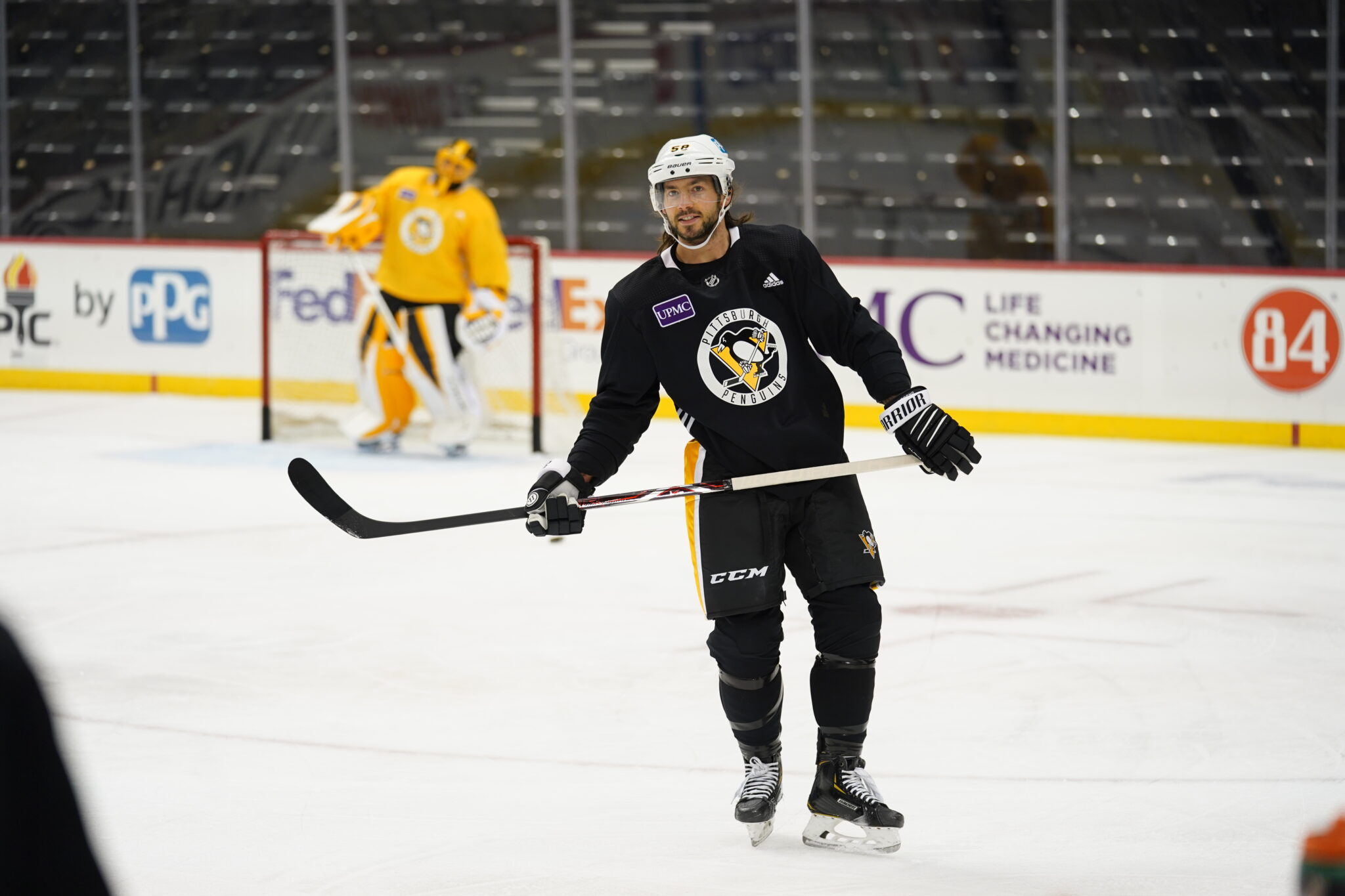Penguins
3 Penguins Points: The Defense, Zucker, and the Penalty Kill

The Pittsburgh Penguins lost to the rejuvenated Buffalo Sabres 4-2 on Sunday, and the Penguins universe ended. Done. Kaput. Penguins Facebook fan groups exclaimed the Penguins Stanley Cup hopes were over, while others fretted over the New York Rangers knocking them out of the playoffs. The Penguins lines are in shambles and all hope is lost.
Everyone, deep breath. Breathe in. Breathe out.
The Penguins have a seven-point cushion with 10 games to go. If New York wins nine, the Penguins need only six wins, but New York has two games upcoming against both the Washington Capitals and Boston Bruins. And a few against the pesky Buffalo Sabres, too.
So, barring an absolute collapse, the Penguins are in the big dance.
Wow, one loss shook a fanbase, and it wasn’t even a blowout–though it was a snoozer.
There are several lessons to learn from Sunday, but more importantly, lessons to learn from putting the game into the context of the last three games since the NHL trade deadline.
3 Pittsburgh Penguins Points:
3. The Penguins defense might be the best since 2016.
Again, in a bubble, Sunday was not a good day, but over the past two months, the Penguins defensemen have been more involved in the play than they have since Justin Schultz went on a 51-point tear in 2017-18.
Brian Dumoulin had a six-game scoring streak snapped on Sunday.
Mike Matheson had nine points (2g, 7a) in his previous nine games before Sunday.
Kris Letang had 13 points (2g, 11a) in his previous 12 games before Sunday.
“I think those guys have been good back there. They’re defending when we need them to. They’re joining the rush; they’re helping us generate offense, whether it be off the rush or jumping off that offensive blue line and providing the support that the forwards need,” head coach Mike Sullivan said. “…just getting the defenseman involved is so critically important in that aspect…so that we’re really we’re encouraged by the progress we’ve made.“
2. The Pittsburgh Penguins lines need a good shake-up.
Jason Zucker isn’t strong as a RW.
“I’m still adjusting a little bit in certain areas but, I think with (McCann) on the other side, it’s honestly whichever way we come back into the zone is more or less how it ends up going,” Zucker said.
In three games since the NHL trade deadline, last Monday, the Penguins line McCann-Jeff Carter-Zucker has statistically dominated the puck but been light on the scoresheet. The line’s Corsi is over 71%. They’re out chancing opponents at a 70% clip.
But…they have scored only two goals and given up two goals. One of those resulted from Zucker being on the right wall and misplaying a puck in the defensive zone. Or, rather, not playing it.
Perhaps flipping wingers from side to side on any given rush or defensive stand is not a good idea. The line has put shots on goal, but the eye test hasn’t been as favorable. Their best chances have been breakaways–Carter and Zucker have each had the goalie in their sights.
The Sidney Crosby line has also given the line tilted ice. The “second” line has taken 31 faceoffs, but only seven in the defensive zone. Their gifted offensive zone time is proportional to their Corsi–about 70%.
Carter is already more productive than was Patrick Marleau, who was acquired at the 2020 NHL trade deadline and is about to break Gordie Howe’s NHL games played record. (Here’s a great think piece from Sheng Peng of San Jose Hockey Now on Marleau’s record).
In the short term, head coach Mike Sullivan has options.
Evan Rodrigues can play RW with Carter and McCann.
Zucker can play LW with Teddy Blueger. Perhaps add Sam Lafferty for more speed on the RW?
Zach Aston-Reese can bolster the otherwise ineffective Penguins fourth line or flip to the RW with Blueger.
The one goal Penguins outing against Philadelphia, combined with the difficulty on Sunday, showed the Penguins’ bottom three lines need a spark until Kasperi Kapanen returns, perhaps as soon as this week.
1. The Penguins PK issues are the greatest concern.
The Penguins penalty killers have fallen to 25th in the league at just 76.7% efficacy. They’ve only killed 16 of their last 23 times shorthanded. If you’re doing the math, that’s less than 70%.
In one interesting quote, Sullivan may have accepted some blame, which in turn puts some on assistant coach Mike Vellucci.
“We’ve got to get better as a group,” Sullivan said. “The coaching staff has to do a better job of getting these guys on the same page.”
The order of operations to win a Stanley Cup is generally 5v5, PK, then power play, in that order. The Penguins penalty killing without Brandon Tanev has taken a big dip. The aggressive attack has become a matador’s red cape.
Buffalo scored on the rush. Other teams have been able to win at the net.
In addition to finding more offense, in the Penguins’ final 10 games, they have to keep the puck out of their net. Teams don’t usually stumble into the playoffs, then have a great run. Teams that break down at the end are teams that leave the dance early.
The Pittsburgh Penguins have time, they will get injured players back (probably), and they have shown an ability to adapt. In the final 10 games, they have to begin to put it all together…or all of the surprising and extraordinary efforts will go to waste.














